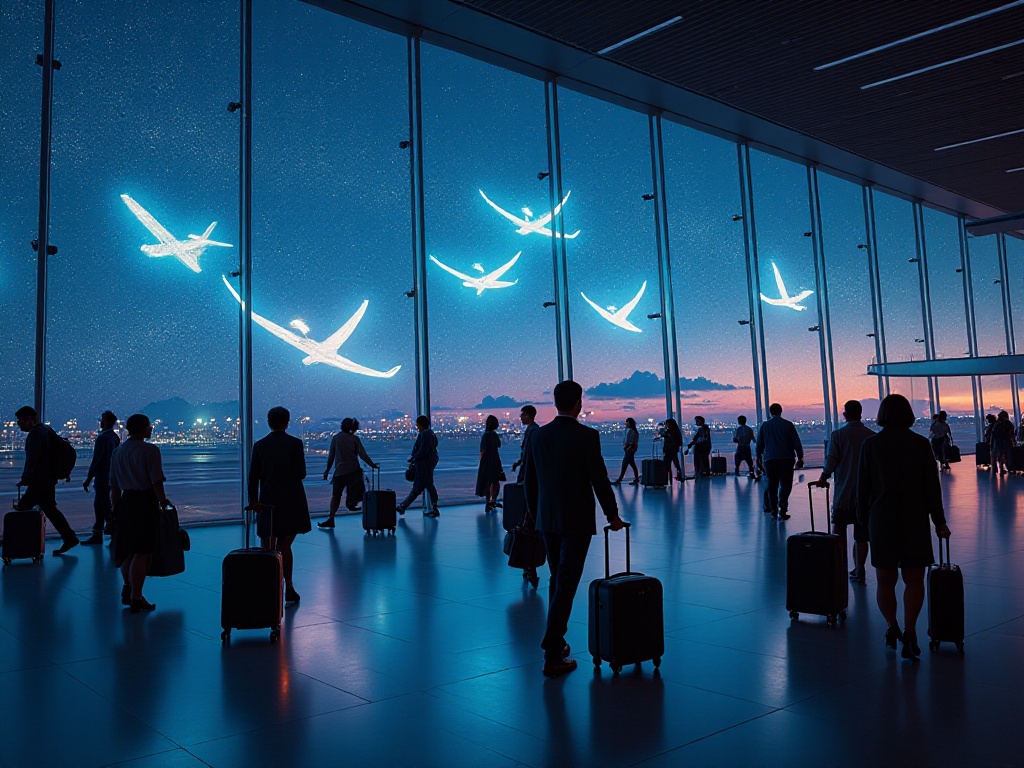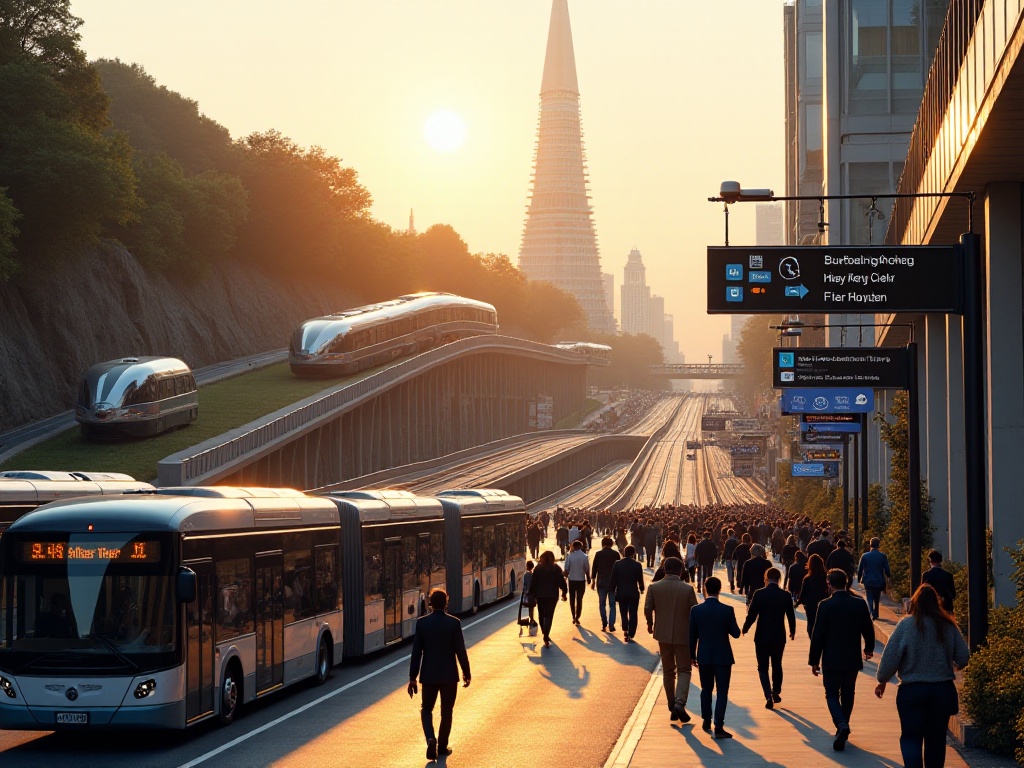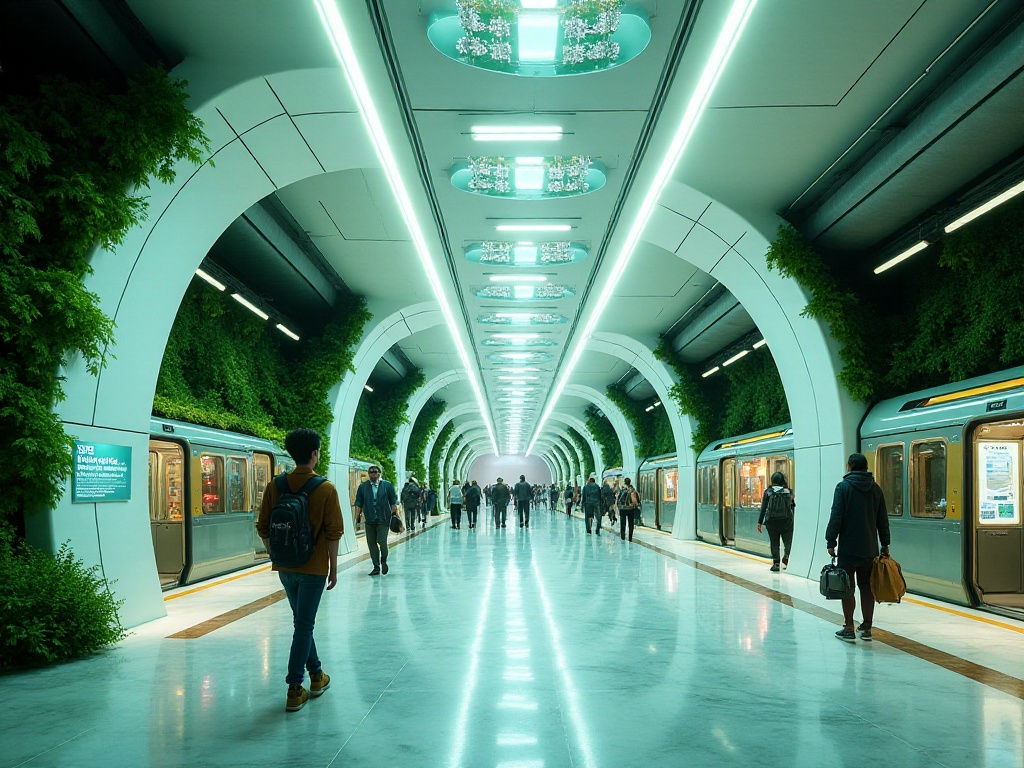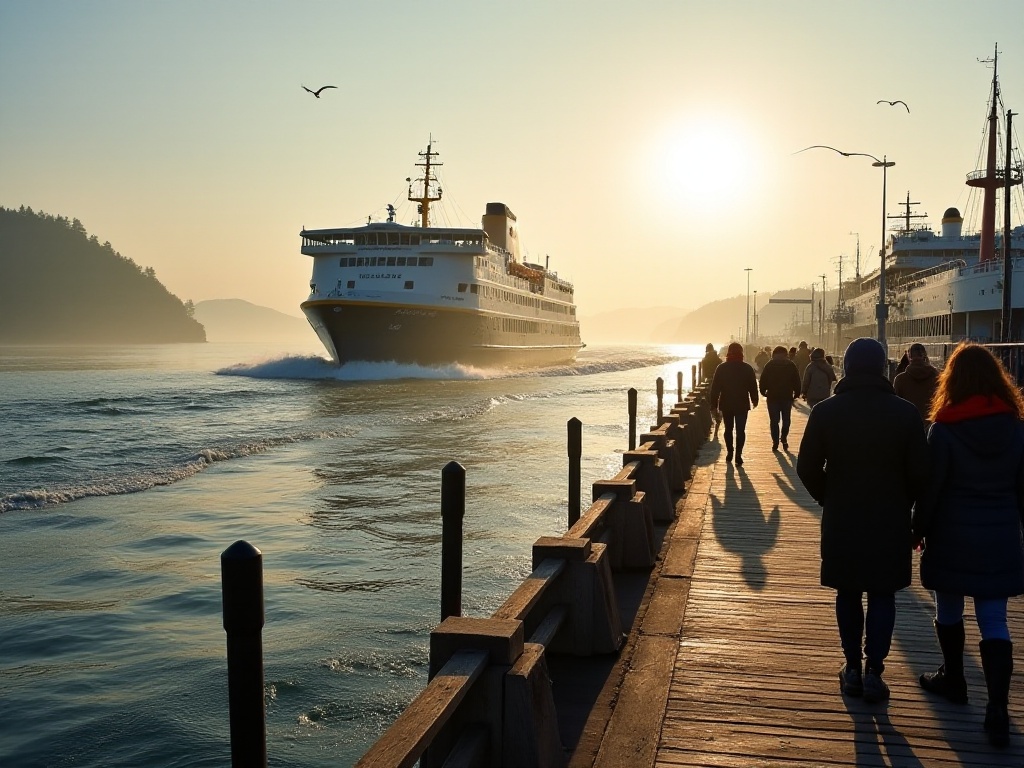When I arrived in Silicon Valley in early 2024, I was immediately impressed by the public transportation system right after landing. As a first-time international student in the US, I was initially very worried about how to get from the airport to the city. But as soon as I exited the terminal, I saw the prominent BART sign - no need to worry at all!
To be honest, when I was doing research on Chinese social media before coming here, many people said that American public transit was terrible and everyone needs to buy a car. But after actually arriving in the Bay Area, I found it completely different from what I imagined! Especially for new international students like us, public transportation is an absolute lifesaver.
The BART stations are clean and tidy, with clear signage - no worry about getting lost. The train cars are spacious with comfortable seating. What surprised me most was that it only took less than 30 minutes from the airport to downtown, even more convenient than driving!
The most impressive thing about the Bay Area is the Clipper Card! It's basically like a super-powered version of public transit cards in China. I got this card right away at the airport BART station when I arrived. The amazing thing is that this card works on practically all public transportation in the Bay Area, so you don't have to worry about buying separate tickets everywhere.
Once when I went to the Golden Gate Bridge with friends, we were wondering how to buy ferry tickets, only to find out that the Clipper Card works on ferries too! It's truly magical! Plus, recharging is super convenient - you can do it right from your phone app without waiting in line for customer service.
The most thoughtful feature is how the card automatically calculates the best fare. For example, if you take several rides in one day, it automatically figures out whether individual tickets or a day pass would be cheaper. This kind of passenger-focused design is really touching.
After being in the Bay Area for so long, my biggest impression is how incredibly comprehensive the public transit network is. BART serves as a main artery connecting San Francisco, Oakland and Silicon Valley. Meanwhile, Caltrain acts as the backbone of the Peninsula, directly linking tech hubs like Palo Alto and Menlo Park.
What impresses me most is the transfer design, which seems perfectly tailored for passengers. I remember once when I needed to attend a lecture at Stanford, I was worried the route would be complicated. But the transfer from BART to Caltrain was so smooth - the platforms were on the same level, just a few steps away, with no need to carry luggage up and down stairs.
The platform designs at each station are also very user-friendly. For instance, clear markings show where the train doors will open, so people can queue up in advance for orderly boarding and alighting. The platforms also have electronic displays showing real-time train arrival times, allowing you to plan your journey precisely.
Living in the Bay Area for a while, you discover that the transit system becomes more thoughtful the more you use it. For regular commuters like us, Caltrain's monthly pass is a real money-saver. When I first arrived, I was unsure about buying a monthly pass, but after calculating, I found that if you ride 4-5 times per week, the monthly pass saves nearly 30%.
Multi-day passes are also a great option for weekend travelers wanting to explore nearby cities. Once I planned a three-day Bay Area loop with friends, and bought a 3-day pass - not only did it save money, but it was super convenient without having to top up the card before each ride.
What touches me most is the accessibility facilities, which are truly industry-leading. Whether at subway stations or on buses, they fully consider passengers with mobility challenges. Elevators, lifting platforms, wheelchair spaces - everything you need. Once I saw an elderly gentleman in a wheelchair traveling alone, and the automatic lifting platform and driver's patient assistance made it easy for him to get on and off - something rarely seen in China.

In Silicon Valley, the tech capital, public transportation is naturally tech-savvy. The real-time information on various apps is incredibly accurate, even showing precise bus delays of just a few minutes. I use the official app most often, which has everything - real-time schedules, route planning, ticket recharging, all in one place.
Once I worked late at the office, almost until the last train. While worrying about whether to take a taxi, the app suddenly sent a notification that the last train was coming. I quickly packed up and rushed to the station, just catching the final train - it was a real lifesaver!
Mobile payments are also super convenient here. Besides the traditional Clipper Card, you can now pay directly with your phone. Apple Pay and Google Pay both work, so you never have to worry about forgetting your card. The WiFi coverage in stations is also comprehensive, so waiting for trains is never boring as you can browse your phone.
What delights me most is the train car design. There are USB charging ports under each seat, which is perfect for phone addicts like us. The cars also have electronic displays showing next station information in real-time, so you never have to worry about missing your stop.

While Bay Area public transit is convenient, there are some tips for newcomers. First is the timing issue - last trains here do run earlier than in China. BART usually ends around midnight, and Caltrain even earlier, with the last weekend trains possibly ending after 10 PM. So if you're planning late dinner or entertainment, definitely check the last train times.
Weekend frequency is another consideration. While weekday peak hours might have trains every 5-10 minutes, weekend waits could be 20-30 minutes. It's recommended to check the schedule before heading out to avoid long platform waits.
Also notable is the fare system. Unlike in China, fares here are distance-based, so prices can vary significantly on the same line for different distances. It's best to check prices on the app in advance to avoid insufficient funds at the station.

After spending so much time in the Bay Area, I've started thinking about why public transit here works so well. Through various channels, I've discovered many aspects worth learning from.
First is the government's level of commitment. Bay Area public transit construction has always been a top priority, with substantial annual investments in maintenance and upgrades. In 2023 alone, over $2 billion was invested, covering not just hardware facility updates but also service quality improvements and technology system upgrades.
Second is the scientific approach to planning. Bay Area transit route planning particularly emphasizes coordination with urban development. For example, new tech parks are always matched with corresponding transit routes. This addresses commuting issues from the source, avoiding situations where everyone drives and causes traffic jams.
Environmental awareness is another focus. The Bay Area has been promoting electric buses, with many routes already completely switched to electric vehicles. This not only reduces pollution but also provides a better riding experience for passengers.
Finally, there's the matter of public participation. The Bay Area transit system regularly solicits citizen feedback to optimize services. Whether it's increasing frequency at certain stations or adjusting routes, they seriously consider passenger suggestions.

Looking ahead, the Bay Area transit system continues to innovate. The most anticipated development is the application of autonomous driving technology. It's said that by 2025, over 100 self-driving buses will begin trial operations in the Bay Area. These vehicles will not only provide more stable service but also further improve safety.
Smart services are also constantly upgrading. Future services might include more data-driven personalization, such as recommending optimal routes based on passenger habits or automatically adjusting frequencies based on real-time passenger flow.
Innovation in sustainability is another focus. The Bay Area is researching solar power for transit systems and developing more environmentally friendly charging facilities. All these developments make the future of transportation very promising.

Through my personal experience in the Bay Area, I've gained a completely different understanding of American public transportation. It turns out that with scientific planning, continuous investment, and advanced technology, public transit can become a city's signature feature.
Looking at public transit systems in many Chinese cities, they're also constantly improving. Through continued learning and innovation, I believe more cities will be able to create convenient and comfortable public transportation systems like the Bay Area's.
This Bay Area transit experience has taught me that a city's public transportation level somewhat reflects its overall development level. I look forward to sharing more interesting observations with everyone next time!
 Previous
Previous
